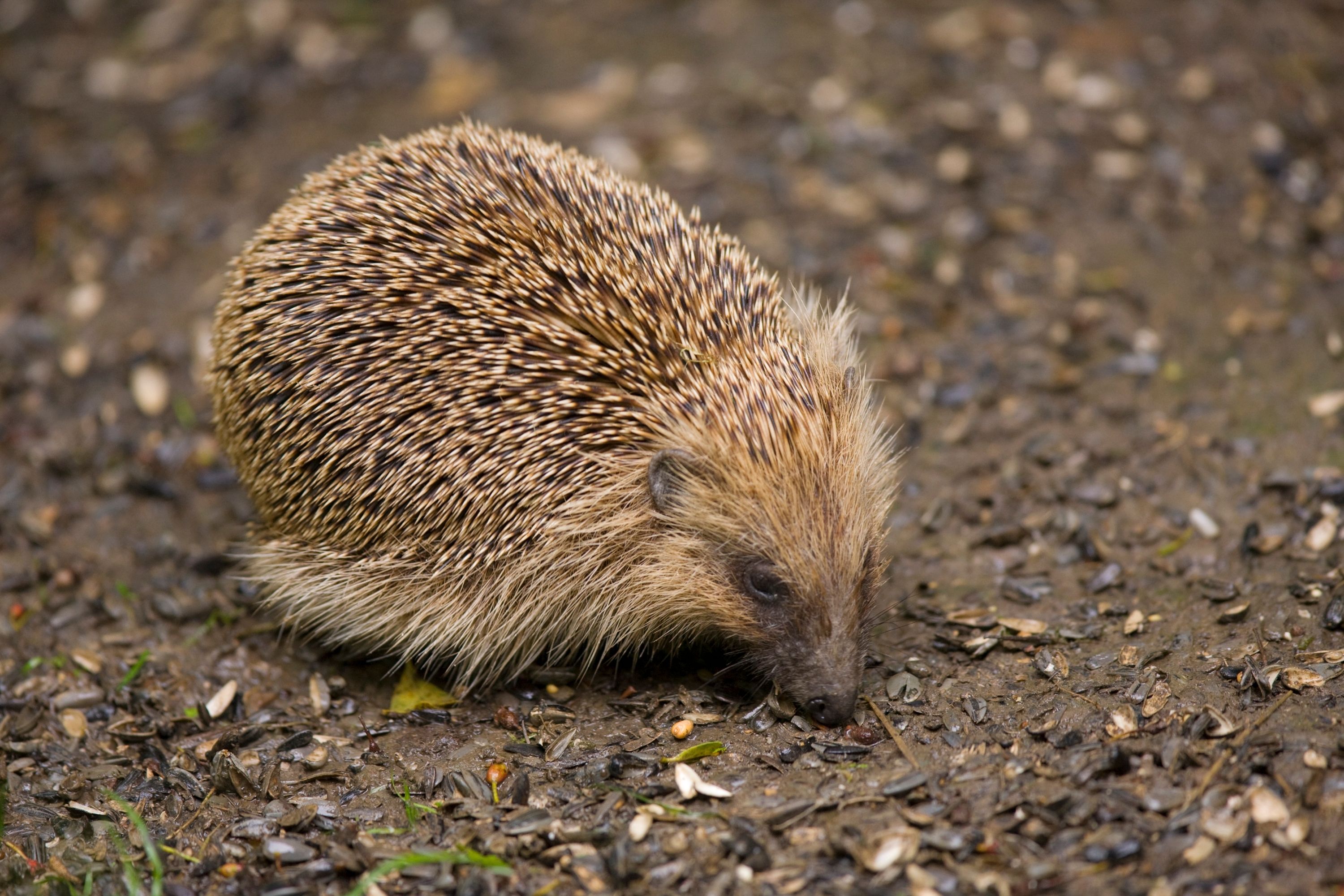European hedgehog
(Erinaceus europaeus)

Description
The European hedgehog (Erinaceus europaeus), also known as the West European hedgehog or common hedgehog, is a hedgehog species native to Europe from Iberia and Italy northwards into Scandinavia and westwards into the British Isles. It is a generally common and widely distributed species that can survive across a wide range of habitat types. It is a well-known species, and a favourite in European gardens, both for its endearing appearance and its preference for eating a range of garden pests. While populations are currently stable across much of its range, it is declining severely in Great Britain where it is now Red Listed (classified as near to extinction). The European hedgehog has a generalised body structure with unspecialised limb girdles. It appears brownish with most of its body covered by up to 6,000 brown and white spines. The length of head and body is ~160 mm (6.3 in) at weaning, increasing to 260 mm (10 in) or more in large adults. It has an extremely short tail as an almost vestigial feature, typically 20 to 30 mm (0.79 to 1.18 in). Weight increases from around 120 g (4.2 oz) at weaning to > 1,100 g (2.4 lb) in adulthood. The maximum recorded weight is 2000 g (4.4 lb), though few wild specimens exceed 1,600 g (3.5 lb) even in autumn. Adult summer weight is typically somewhat less than in autumn, with an average of around 800 g (28 oz) and adult weights commonly as low as 500 g (18 oz). Males tend to be slightly larger than females, but sex differences in body weight are overshadowed by enormous seasonal variation. The European hedgehog is unlike any other creature across most of its range. Where it co-exists with the northern white-breasted hedgehog (Erinaceus roumanicus), the two species are difficult to distinguish in the field, the latter having a white spot on its chest. It is probably the largest hedgehog species and is possibly the heaviest member of the order Erinaceomorpha. Leucistic or 'blonde' hedgehogs occasionally occur. Such specimens are believed to have a pair of rare recessive genes, giving rise to their black eyes and creamy-colored spines; however, they are not strictly speaking albino. They are extremely rare, except on North Ronaldsay and the Channel Island of Alderney where around 25% of the population is thought to be blonde. True albino morphs of the hedgehog occur infrequently. The European hedgehog is largely nocturnal. It has a hesitant gait, frequently stopping to smell the air.
Taxonomic tree:







